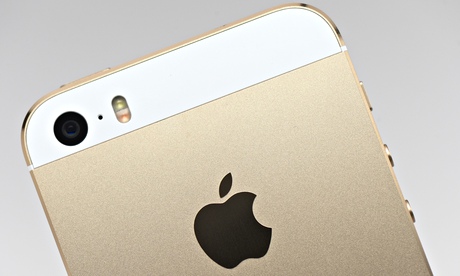
It's late August, and joining Goodwood and the Notting Hill Carnival is the newest seasonal event on the calendar: speculation about new iPhones.
One particular nugget lighting up fans' eyes – and burning a hole in their wallets – is that the latest model might have a screen made out of sapphire. Reports suggest Apple has signed a £350m deal with a sapphire manufacturer to put the screens into mass production. If it does, that would render the new iPhone almost impervious to scratches. Pure sapphire is one of the hardest minerals in the world, ranking 9 on the Mohs scale, which measures hardness of minerals from one (talc) to 10 (diamond). Unless your keychain is exceptionally bling (or you are carrying around a chunk of Mossanite, a rare mineral mostly found in meteorites), a sapphire screen is likely to actually be safe bouncing around in your pocket.
Apple isn't about to start buying up sapphire mines, though. It has been possible to manufacture the gem for more than a century, using a process involving dipping a small "seed" into a vat of molten aluminium oxide, of which sapphire is a crystal.
As well as being cheaper than digging the rocks out of the ground, the process also avoids the impurities that give sapphire its classic blue tint, so don't worry about an off-colour iPhone. In fact, if you have an iPhone 5S, you can get a preview of what the new screen might be like: that model uses a small sliver of sapphire for the camera lens. And the average iPhone already contains the following:
Lithium
A mainstay of consumer technology, lithium is a key ingredient in almost every rechargeable battery on the market. The iPhone 5S's 1600mAh lithium-ion battery uses the metal in a compound, but it's still so unstable that the casing has to be safe from cracks.
Tantalum
Used extensively in capacitors, a component used to regulate electricity flow, sourcing tantalum has been a major headache for Apple. The element is typically mined as coltan, an ore that is most commonly found in and around war-torn Democratic Republic of Congo. Apple managed to guarantee it only used conflict-free tantalum in February 2014.
Anodised aluminium
The metal case of the newest iPhones is made out of aluminium that has been treated with a process called anodisation. The metal is submerged in an acid, which then has a current passed through it, causing oxidation. The tougher, duller oxidised surface can then absorb dyes, while protecting the aluminium base underneath, without the extra width of a layer of paint; the anodised layer can be as slim as five micrometres.
Benzene and n-hexane
Two products that you won't find in an iPhone 6 are benzene and n-hexane, solvents used to clean the electrical circuits. The liquids, which can cause cancer and nerve damage, will no longer be used in the final stages of assembly, Apple announced in August. Nearly 23,000 people signed a petition asking the firm to stop using the chemicals, in order to protect their employees in China.
Silicon
The element that gave Silicon Valley its name. Slabs of silicon are used to make the chips at the heart of every computer. The circuits for the iPhone 5S are etched out on huge plates using a process with a minimum feature size of just 28 nanometers, three thousand times slimmer than a hair.
Gold
The gold iPhone may not actually be made of gold, but the precious metal is still used inside even the ordinary variety. The element is from the same group as copper, and conducts electricity with ease – but, unlike its cheaper relative, it doesn't tarnish, and is more malleable.

